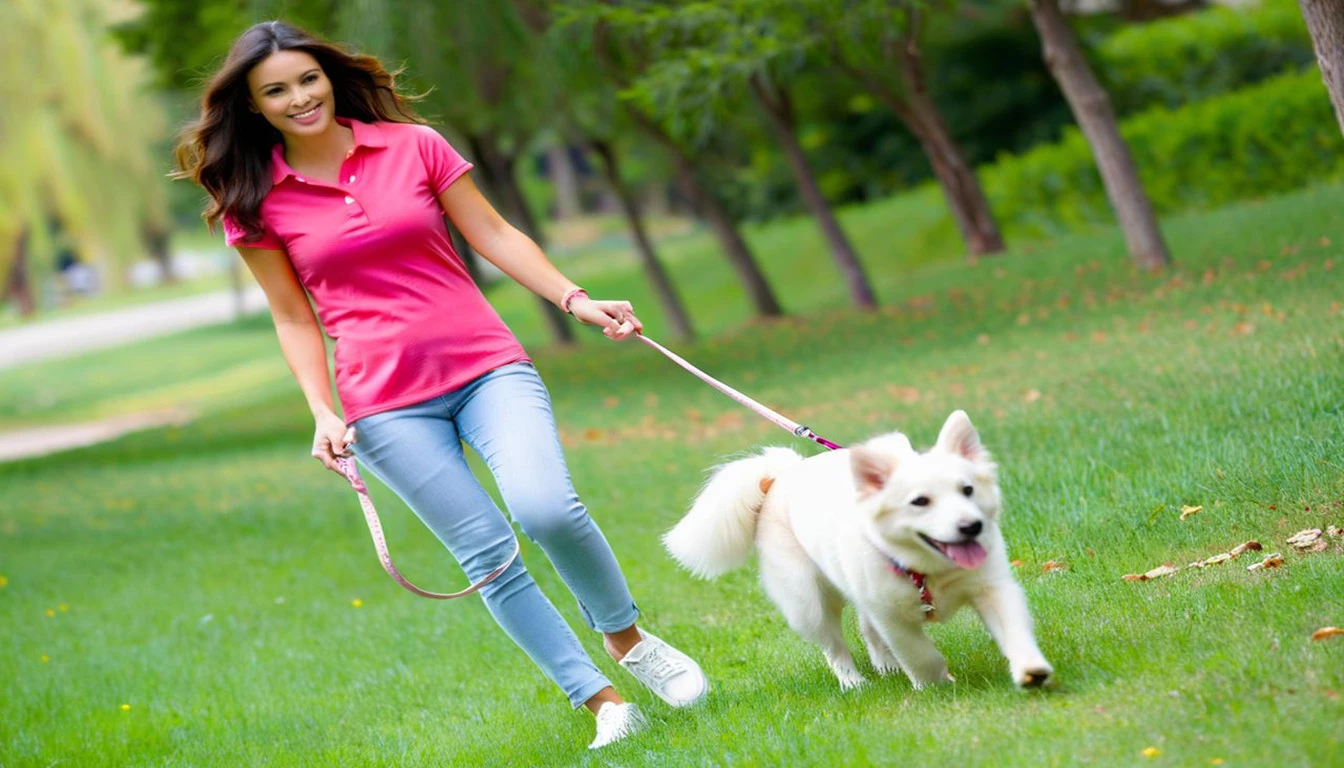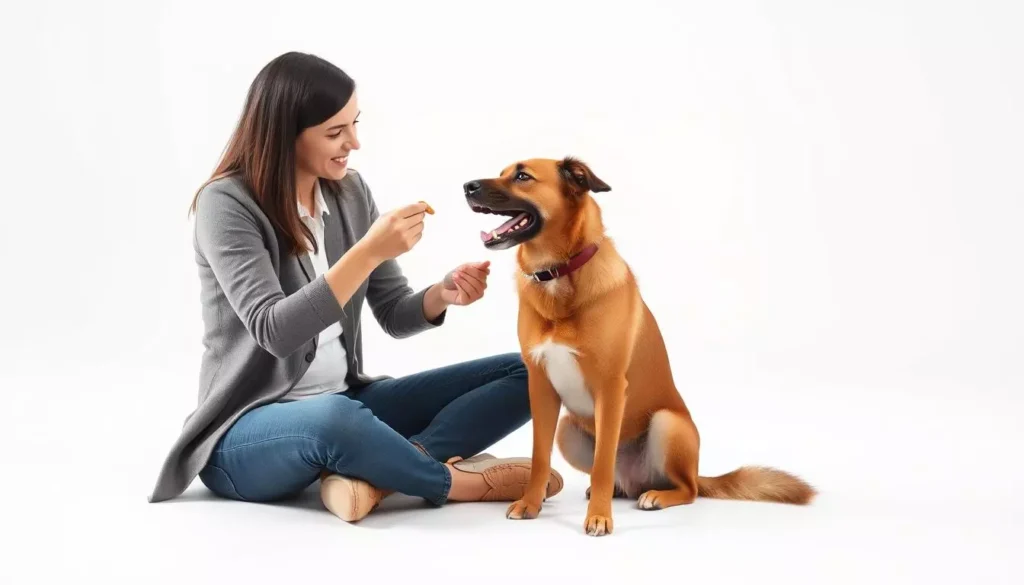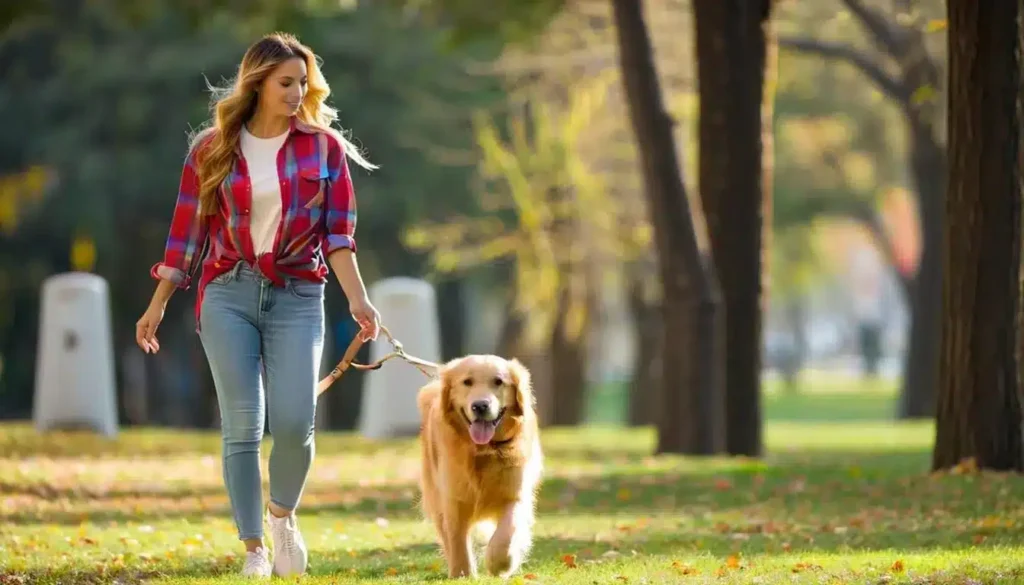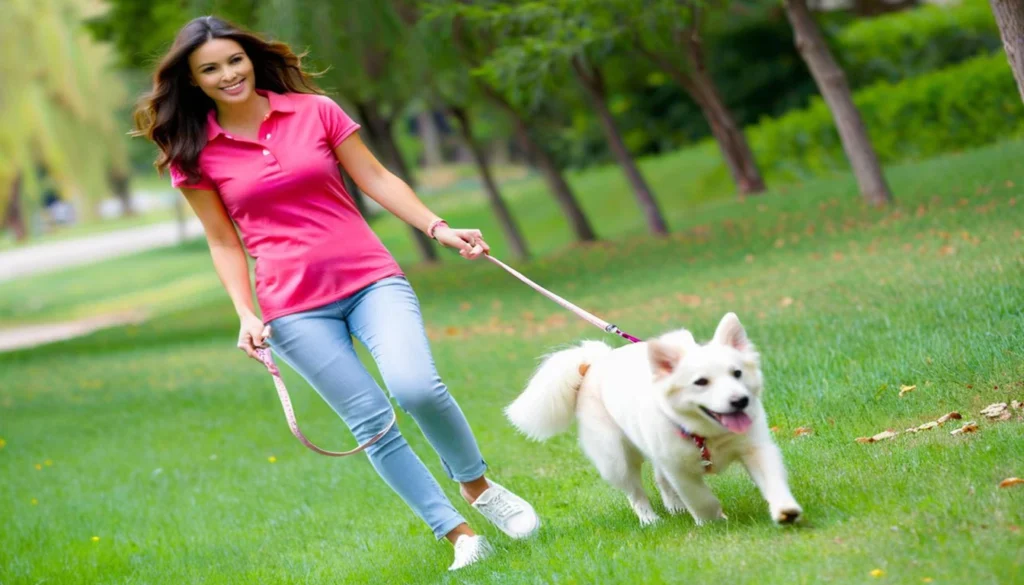Training my dog has been a journey of joy and frustration. My puppy, full of energy, ignored my commands at first. This taught me about common dog training mistakes.
Knowing these mistakes can change everything. It turns tough tasks into fun moments. By avoiding these errors, I've improved my dog's behavior and our bond.
The goal of dog training is to enjoy it with your pet. It should be rewarding for both of you.
Key Takeaways
- Avoiding common dog training mistakes helps enhance your relationship with your dog.
- Understanding what not to do is as crucial as knowing effective training methods.
- Each mistake can hinder your dog’s progress, making patience key.
- Dog training errors can often lead to confusion, both for the dog and owner.
- Correcting common mistakes can transform your training sessions into positive experiences.
Understanding Dog Training Basics
Learning the basics of dog training is key to a great bond with my dog. Through obedience training, I aim to communicate clearly and understand each other better. This helps in teaching good behavior and avoiding bad ones.
First, I start with consistent commands and methods. Being patient is important since every dog learns at their own pace. Tailoring my training to fit my dog's personality makes it more effective.
Next, I focus on socialization. By introducing my dog to different places and animals, they become more adaptable. Building trust helps in teaching them in a safe and loving space. Keeping training and interactions consistent is vital for my goals.
Common Dog Training Myths
As a dog owner, I've seen many myths about training. One big one is that dogs only listen to harsh punishment. This can make dogs scared and hurt the bond with their owners. But, science shows that positive rewards work best.
Dogs do better when they get treats for good behavior, not fear of punishment.
Another myth is that training only happens in classes. New owners might feel left out if they can't go to classes. But, training happens every day, not just in classes. Regular practice helps dogs remember what they've learned.
By clearing up these myths, we help ourselves and our dogs. Knowing the truth leads to a better relationship with our pets.
What Are Some Common Mistakes to Avoid When Training a Dog
Training my dog has shown me some big mistakes to steer clear of. Two big ones are cue nagging and poisoning cues. Knowing these mistakes helps me train better and strengthens our bond.
Cue Nagging: The Repetition Trap
Cue nagging happens when I keep repeating commands without letting my dog respond. This makes the first command sound like background noise. My dog then waits for me to say it again.
This lack of patience in responding makes learning hard. It causes confusion and frustration for both of us.
Poisoning Your Cues
I learned that poisoning cues happen when commands are tied to bad experiences. This can make my dog scared or anxious to follow commands. If a command is linked to pain or discomfort, my dog will avoid it.
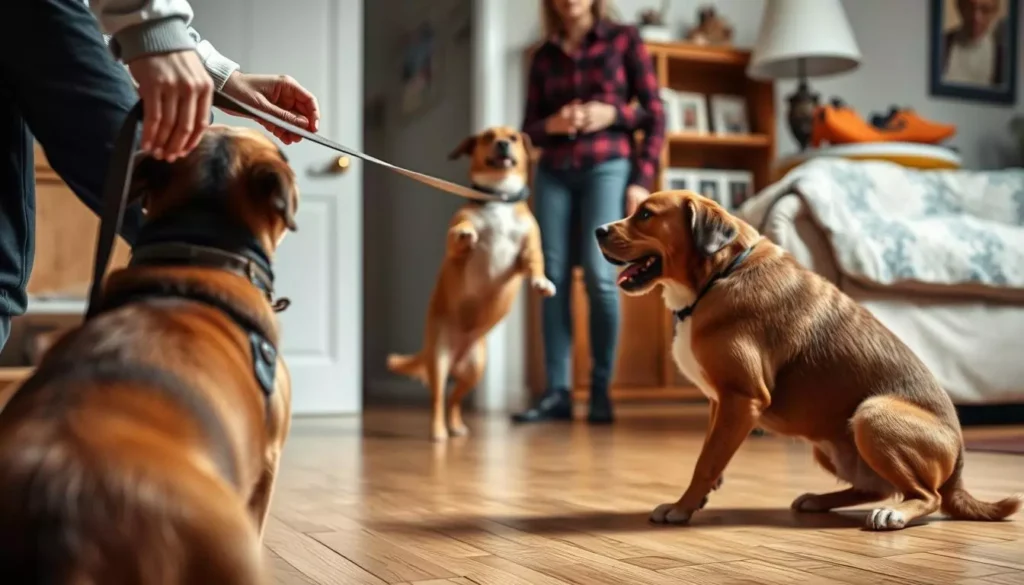
Utilizing Positive Reinforcement Effectively
Positive reinforcement dog training is a great way to encourage good behavior in dogs. It makes training fun for both the dog and the owner. Knowing how to use rewards well is key to a successful training process.
The Importance of Proper Rewards
Choosing the right rewards is vital in positive reinforcement dog training. You can use treats, toys, or praise. Each reward should match your dog's personality. This creates a strong bond between good behavior and positive feedback.
Being Generous with Treats
The treats you give can really help your dog want to learn. Giving treats freely makes training more enjoyable. Studies show that dogs like special treats better than regular kibble.
When I give my dog special treats, they get more excited and focused. This makes our training sessions better.
Practicing Between Training Sessions
Adding daily dog training to our routines can really help our dogs learn faster. It's key to practice regularly to make sure they remember what they've learned. Short training sessions throughout the day make our dogs more eager to learn.
This method not only helps them understand better but also makes training fun. It becomes a part of our daily life together.
Daily Training Routines
Having a daily training routine helps a lot. I set specific times for training to make it predictable. Whether it's before our walk in the morning or a quick session during lunch, it strengthens our bond.
Regular practice helps them learn faster and understand better. Dogs do well with repetition, so frequent training helps them progress.
Short, Focused Sessions
Short and focused training sessions help a lot. I usually do 5 to 10-minute sessions, which keeps my dog's attention. These short sessions prevent us from getting frustrated and keep the training positive.
I can teach new things or review old ones without overwhelming my dog. This way, they learn faster and are more excited to learn.
Avoiding Frustration During Training
Training my dog is best when it's positive. Frustration can sneak in, affecting us both. I watch for stress signs in my dog and take breaks when needed.
Being patient is key. Celebrating small victories makes training fun. It's about enjoying the little steps, not just the big ones.
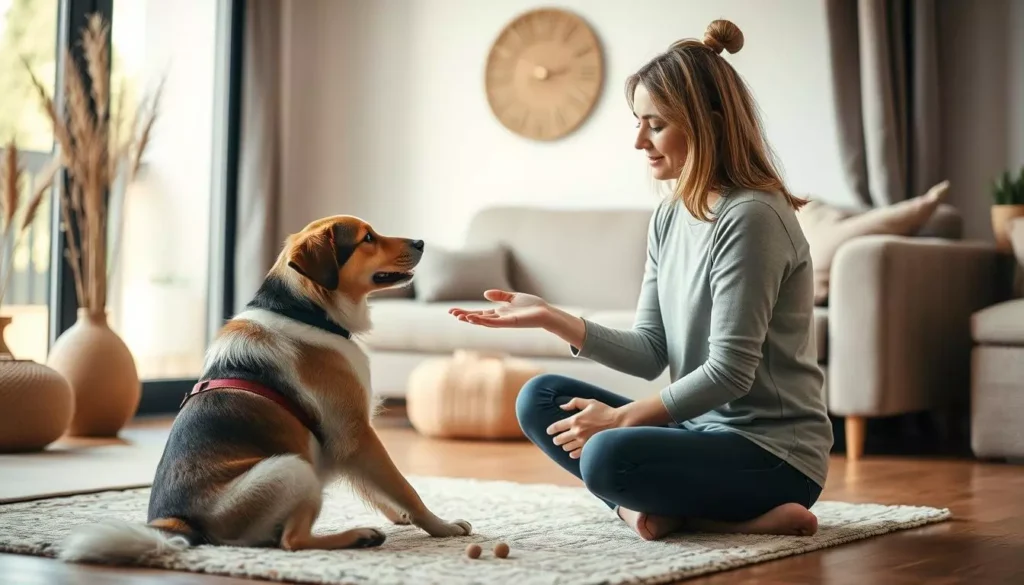
Adding fun to our sessions helps a lot. Games and toys keep us both excited. This approach keeps us connected and happy.
Identifying and Avoiding Aversive Training Methods
As a dog owner, I think it's key to know about different training methods. Aversive training, like shock collars and leash corrections, is a big worry. It can cause bad behavior and hurt our bond.
Risks of Shock Collars and Leash Corrections
Shock collars seem like a quick fix for dog behavior. But, they can make my dog scared and anxious. This can lead to more problems. Leash corrections also hurt and confuse my dog.
Both methods can mess up our communication. It's hard for my dog to know what I want if we're not on the same page.
Understanding Positive versus Negative Reinforcement
Thinking about how I train my dog, I see the importance of positive versus negative reinforcement. Positive reinforcement is about rewarding good behavior. It builds trust and happiness in our relationship.
Negative reinforcement, on the other hand, uses unpleasant things to get a desired action. I prefer positive reinforcement because it makes our bond stronger and more joyful.
Using Clear and Consistent Commands
In dog training, my main goal is to communicate well. Clear commands help my dog understand what I want. This makes learning easier and cuts down on confusion.
Being consistent in training is key. If I change commands, my dog gets confused. So, I always use the same words for each action.
Importance of Distinct Cues
Using clear cues is crucial. If cues sound alike, my dog gets mixed signals. For example, "sit" and "stay" should be different in sound and action.
| Training Command | Distinct Cue Example | Common Mistake |
|---|---|---|
| Sit | Use a firm and clear "Sit" | Using "Sit" and "Set" interchangeably |
| Stay | Firmly say "Stay" with a hand signal | Using "Stop" and "Stay" together |
| Come | Clearly command "Come" with enthusiasm | Using variations like "Here" or "C'mon" |
Choosing the right words and cues is vital. It helps my dog learn faster and strengthens our bond as we work together.
Understanding Your Dog’s Emotions
Knowing how to read your dog's emotions is key to good training. As a dog owner, it's vital to grasp the subtleties of their behavior. Dogs show a variety of feelings, from fear and anxiety to joy and excitement. These emotions can greatly impact their ability to learn.
For instance, a nervous dog might find it hard to learn new commands. On the other hand, a happy dog might get too excited and lose focus during training.
Watching how my dog reacts helps me understand their mood. I pay attention to their body language, sounds, and actions. This lets me adjust my training to better meet their needs. It makes our training sessions more effective and builds a stronger connection between us.
By prioritizing my dog's emotional health, I create a positive learning environment. Finding the right balance between encouragement and patience helps them learn better. In the end, understanding dog emotions leads to more successful training and a deeper bond.
Taking Into Account Distractions
When training dogs, distractions are a big deal. I've learned that handling distractions is key to my dog's learning and behavior. Understanding the three Ds – Distance, Distraction, and Duration – makes training better.
The Three Ds: Distance, Distraction, Duration
Each part of the three Ds helps us train better. Let's look at how they work together to help my dog learn in different situations.
| Element | Description | Impact on Training |
|---|---|---|
| Distance | How far the dog is from the distraction. | More distance means less distraction, helping focus. |
| Distraction | The presence of tempting things nearby. | More distractions need more training and patience. |
| Duration | How long the behavior must last. | Longer times help make the behavior stronger. |
By managing these elements, we can train well even in tough places. I start by making each session a bit harder. I adjust distance, control distractions, and make the training longer. This builds my dog's confidence and strengthens our bond.
Preventing Common Training Mistakes with Puppies
Puppies are full of curiosity and love to learn. But, many owners make mistakes that can slow them down. One key tip is to use positive reinforcement instead of harsh corrections. This method not only helps them learn but also strengthens your bond.
Socialization is key for puppies' behavior. Introduce them to different places, people, and animals. This helps them grow into well-adjusted adults. Early and regular socialization prevents fear and aggression. Make sure their experiences are positive and rewarding.
In short, fixing puppy training mistakes early is crucial. By using the right training tips and focusing on socialization, you set the stage for a happy dog. This ensures a strong and loving relationship with your puppy.
Training Adult and Senior Dogs
Many people think training is only for puppies. But, training adult dogs and seniors is just as valuable. It strengthens the bond between us and our dogs, no matter their age. Training keeps their minds sharp and helps them learn new things.
Training older dogs needs patience and understanding. They might have physical or behavioral changes due to age. Positive reinforcement is key to motivating them, whether they're young or old.
Training them throughout their lives keeps them happy and well-behaved. It prevents bad behavior and makes our homes peaceful. So, I encourage all dog owners to start training their dogs, no matter their age.
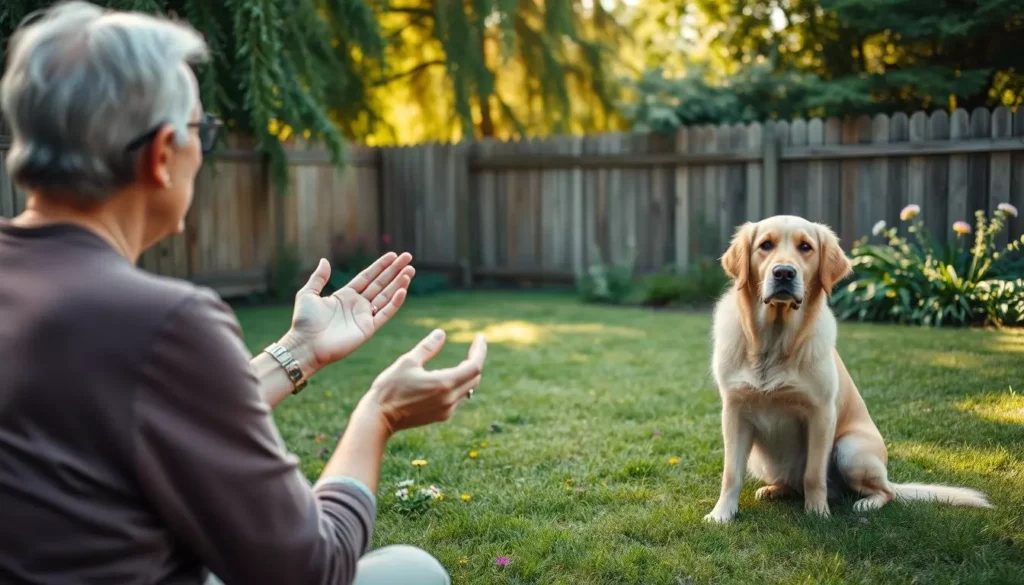
| Age Group | Focus Areas | Training Tips |
|---|---|---|
| Adult Dogs | Refresher on Commands, New Tricks | Use consistent commands and positive reinforcement. |
| Senior Dogs | Behavioral Issues, Physical Limitations | Be patient, adjust exercises, and maintain a calm environment. |
Generalization of Training Cues
Training my dog shows me how important generalization is. Dogs learn cues in one place but might not get them in others. This is why training in different places is key. It helps them understand commands everywhere, making communication better and learning stronger.
Training in Varied Environments
Training in different places helps my dog get used to new things. I start in a quiet area with few distractions. Then, I move to places like parks and streets. This makes my dog more confident and adaptable.
Proofing Behaviors
Proofing is a big part of good dog training. I add new challenges like distance and distractions while keeping commands strong. For example, I practice "sit" during walks with other dogs and people. This patience and consistency help my dog respond well, no matter what's around.
| Environment Type | Distraction Level | Training Focus |
|---|---|---|
| Home | Low | Basic commands |
| Neighborhood | Medium | Leash manners, recall |
| Park | High | Socialization, focus commands |
| Public events | Very High | Proofing behaviors, advanced commands |
Recognizing Signs of Fear in Your Dog
It's key to understand fear in dogs for a positive training experience. Dogs show canine anxiety signals when they're stressed or fearful. Signs include cowering, hiding, or avoiding eye contact, showing they're uncomfortable.
When my dog pants a lot or paces, it's a sign of fear. Spotting these signs helps me make training more comfortable. I watch my dog closely during training. If they seem uneasy, I change my approach to make them feel safer.
Creating a safe space helps my dog learn better. Knowing these canine anxiety signals lets me respond the right way. If needed, getting professional help can help tackle deeper issues. Facing fear together strengthens our bond, making training fun for both of us.
Seeking Help When Needed
Training challenges can pop up, and knowing when to ask for help is key. Finding a dog trainer who fits your style is important. Many people find professional help helpful, especially when home methods don't work.
Finding the right trainer can really help you and your dog.
Choosing the Right Trainer
When looking for a trainer, think about their experience and training style. Choose trainers who use positive methods. Old methods can make things worse.
Read reviews and ask for suggestions. Meeting the trainer in person helps you see if they're a good fit.
Consulting a Veterinarian When Necessary
Sudden behavior changes might mean it's time to see a vet. Knowing when to go to the vet is important. A vet can check for health problems and give advice on training.
| Considerations When Seeking Help | Importance |
|---|---|
| Trainer's Training Philosophy | Aligns with your values and improves results |
| Experience with Similar Issues | Increases the likelihood of effective solutions |
| Positive Reinforcement Methods | Promotes a healthy and trusting bond |
| Veterinarian Consultation | Rules out health concerns affecting training |
Keeping Training Fun and Engaging
Fun in dog training is key to keeping our pets excited to learn. A positive vibe makes training enjoyable for dogs and their owners. Games and rewards add to the fun, leading to better learning.
Engaging training means using fun activities. Games like fetch, hide-and-seek, or agility courses make training exciting. These activities keep my dog's attention and strengthen our bond. A playful yet focused environment helps my dog learn faster.
Clicker training during play boosts focus. My dog loves knowing fun rewards are coming. I always check which activities my dog enjoys most. This makes every training session a fun adventure for both of us.
Conclusion
Looking back at dog training, I see how avoiding common mistakes is key. We've talked about the importance of being clear, patient, and positive. These tips help us train our dogs better and strengthen our bond with them.
Training is a journey that keeps going as our dogs grow. By changing our methods to meet their needs, we learn more about them. This makes our dogs better behaved and part of our family.
Good dog training makes our pets happy and more responsive. With hard work and a willingness to learn, anyone can have a great relationship with their dog. This makes our lives better and our pets happier.

